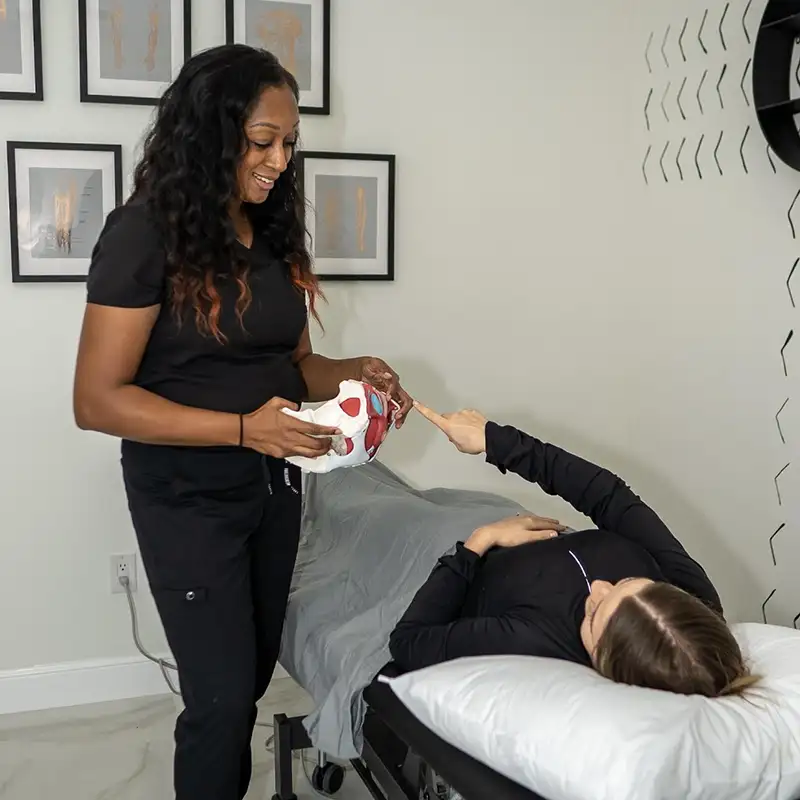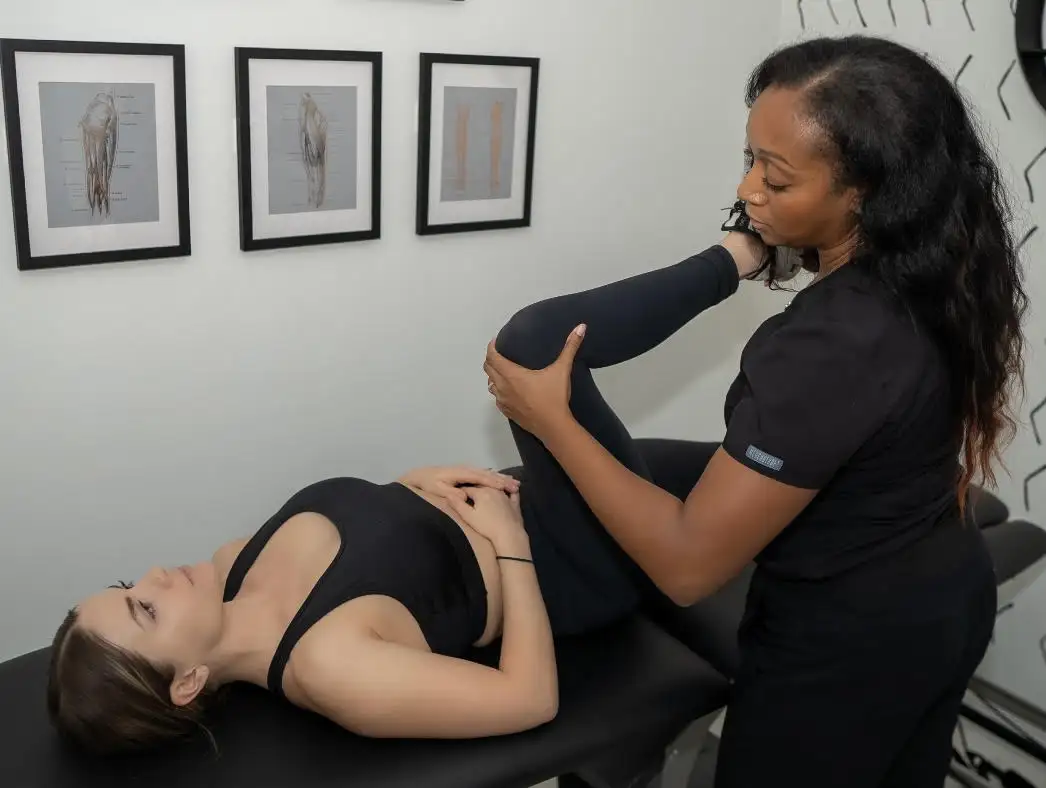Pelvic Floor Therapy
Restore and Strengthen
Pelvic floor therapy, particularly when combined with other treatment modalities such as prenatal and postnatal care and chiropractic care, can help new moms recover faster in the postpartum period. It also is a successful intervention to address disorders like pelvic organ prolapse, incontinence, painful sexual intercourse, and pelvic pain. Whatever symptoms you’re having, we’re here to help you on your healing journey.
Learn more about what pelvic floor therapy is, and who might need it.


What Is Pelvic Floor Therapy?
Pelvic floor therapy is a specialized form of physical therapy that helps strengthen the pelvic floor muscles. Different therapy techniques and modalities will be implemented based on your symptoms. Our physical therapists will work closely with other members of your care team.
Techniques and modalities can include:
- Relaxation and strengthening pelvic floor exercises
- Manual therapy
- Education
Symptoms are usually a result of pelvic floor dysfunction.
Pelvic Floor Dysfunction
Pelvic floor dysfunction is when your pelvic muscles become weak, too tight or overactive, uncoordinated, or painful for many reasons. Your pelvic floor muscles support your urethra, bladder, intestines, recriminations, and other pelvic organs. When the muscles do not function properly, they can cause dysfunction in your daily bladder, bowel, and sexual function.
According to scientific research, this condition affects at least 32% of women in the United States, and a smaller percentage of men.
Pelvic Floor Therapy for Women
Pediatric chiropractic care gets your child started out on the path to whole-body wellbeing from a young age. And since we include nutrition information, sports injury prevention, and proper posture as part of our care, it teaches them healthy habits they can use for a lifetime. Those are the big picture benefits. Some more specific benefits of chiropractic care for your children can include:
- Urinary frequency and urgency
- Bladder leaks
- Constipation
- Pelvic organ prolapse
- Postpartum pelvic pain
- Postpartum back pain
- Deep core weakness
- Pain during sex
Pelvic floor dysfunction in women can be caused by a number of factors, including:
- Pregnancy
- Aging
- Changes in hormones from menopause
- Obesity
- Pelvic floor injuries
- Hysterectomy
- Chronic coughing such as with COPD or smoker’s cough
- Very high impact exercise
So even if you’ve never had a baby, if you’re having the symptoms described above, pelvic floor therapy could be a good treatment option for you. Many women are embarrassed about their symptoms, but there is no need to be. By having an honest and open conversation with your doctor and physical therapist, we can develop a customized plan of care for you. In addition to pelvic floor physical therapy, this might include an exercise and weight loss plan and nutritional changes.
Pelvic Floor Therapy Benefits
By strengthening your pelvic floor muscles, pelvic floor physical therapy can help:
- Reduce or eliminate urinary incontinence
- Reduce urinary urgency and frequency
- Reduce or eliminate fecal incontinence
- Decrease or eliminate constipation
- Lower risk of vaginal prolapse
- Reduce pain with intercourse (for women)
- Improved sexual function
- Ease symptoms of endometriosis
- Reduce pelvic pain

Pelvic Floor Therapy FAQs
1. Does pelvic floor therapy work?
2. What does pelvic floor therapy help with?
- Urinary incontinence
- Fecal incontinence
- Chronic constipation
- Pelvic pain
- Coccyx (tailbone) pain
- Pudendal neuralgia
- Pelvic organ prolapse
- Diastasis recti (abdominal separation)
- Pubic symphysis diastasis
- Endometriosis symptoms
- Sexual function
3. What can I expect with pelvic floor therapy?
4. How many therapy sessions will I need?
5. Is pelvic floor physical therapy painful?
6. I had a C-section. Do I still need pelvic floor therapy?
Yes. Although you didn’t give birth vaginally, your pregnancy added an increased load on your pelvis and your pelvic floor muscles, likely causing a change in pelvic muscle strength, tone, and overall function. Additionally, your therapist will address other regions of the body that are affected from childbearing.
7. How soon can I work with a pelvic floor therapist after giving birth?
We generally wait 6 weeks postpartum to begin pelvic floor therapy assessment and intervention that address the pelvic floor muscles only. However, there are other things that can be addressed that are affected during and after the birthing process, such as posture, strength, stability, and mobility. So, you can start working with a pelvic floor trained therapist as soon as you want after childbirth!
8. Can pelvic floor dysfunction go away on its own?
Although some of your symptoms may come and go on their own, why not give yourself the best advantage for normal pelvic function by working with a pelvic floor trained physical therapist to reduce your symptoms sooner.
Book an Appointment Today
If you’re tired of needing to go to the bathroom all the time or having sexual health issues, pelvic floor therapy can help you take control of your life.
Book your appointment at Cima Health today.

